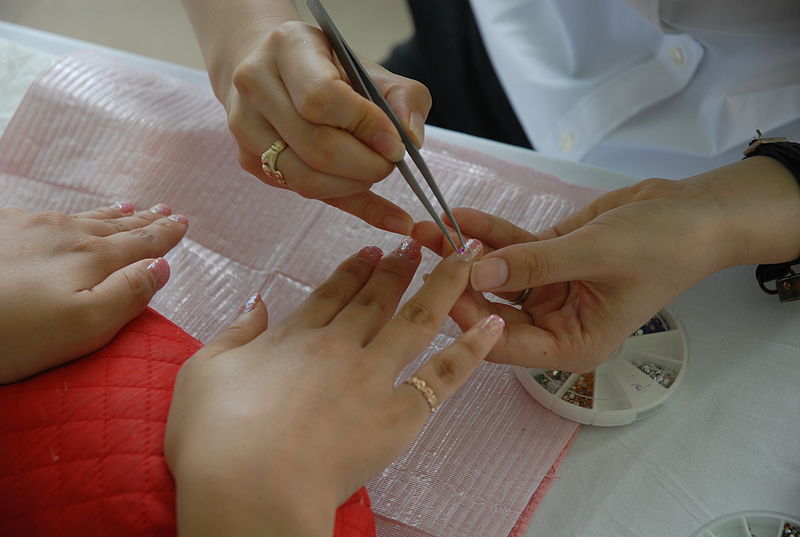
Nail salon workers are exposed to a plethora of skin infections, viruses, and blood-borne pathogens. It only takes a small break in sanitation practices to share an infection with their customers.
Any compromise in the skin barrier exposes a person to bacteria and other organisms. Improper sterilization of instruments, insufficient cleaning of gloved or ungloved hands, and non-sterile footbaths hold an alarming number of entities.
Skin Infections Commonly Associated with Nail Salons
Nail fungus or onychomycosis or tinea unguium. Fungus is a spore-producing organism that can invade nail beds and skin. It usually begins with small yellowish spots under the nail and rapidly progresses. The nails become thick and discolored and may cause the nail to separate from the nailbed. It can cause permanent damage to nails.
Athletes foot, also known as tinea pedis, is a fungus but it’s on the foot bottom and between the toes. Fungi are an easily acquired skin infection and spread by contact with contaminated surfaces.
Staph infections are very easy to transmit, and MRSA is rampant. This is a serious staph skin infection because it is resistant to antibiotics and spreads rapidly. It can be constrained to the skin if treated aggressively and quickly, or it can invade the bloodstream causing sepsis.
Warts on hands and feet are a strain of the human papillomavirus. They are bits of raised discolored flesh that have a bumpy appearance. It may take weeks or months for them to appear after exposure. They are contagious and spread through contact with the person infected or items touched by that person. They may disappear after an extended time but usually reoccur somewhere else.
Viruses like the flu can live on uncleaned surfaces for up to eight hours. If multiple customer services are performed within that period without proper sterilization, the virus can be transferred to the following clients.
Mycobacterium fortuitism is commonly found in footbaths at salons. It is a rapidly growing bacterial skin infection with serious consequences. It is known to cause osteomyelitis and cutaneous infections resulting in persistent pustular lesions. The infection may require surgery, resolve with medications or it may become chronic and reappear repeatedly. Untreated, these pustules may become open draining wounds.
Blood Borne Diseases
Bloodborne infections include viruses like Zika, viral hepatitis, Hepatitis C and B, and HIV are all spread through contact with a minute drop of body fluids. Most of these infections will not even be traceable to the salon and can take up to twenty years to be diagnosed.
Salon clients should seek the medical opinion of a dermatologist if any redness, swelling, unexpected pain, or a rash develops. This quick evaluation can prevent unnecessary complications.
